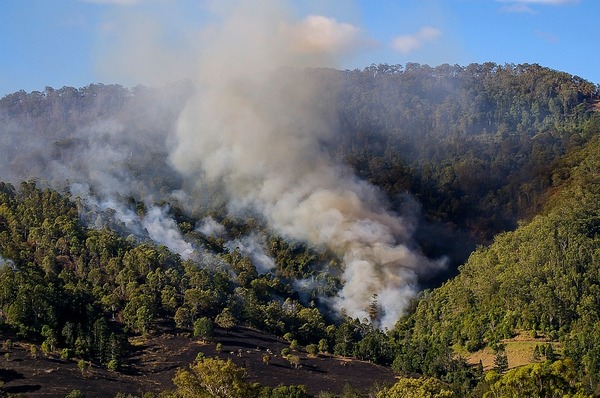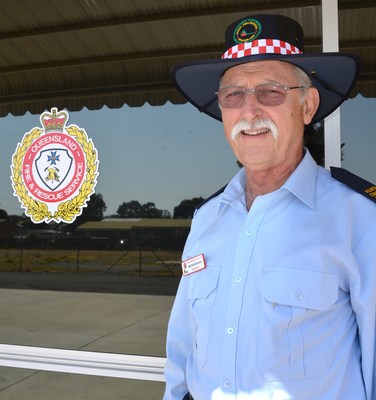By Jeremy Sollars
Make no mistake – bushfire season is here, and the time to prepare is now.
Fuel loads on the ground right now across the Southern Downs and Granite coming out of winter are the biggest they’ve been in recent years, largely thanks to rainfall from Cyclone Debbie back in late March and early April.
The ‘Debbie rain’ spurred on significant vegetation growth across our region and combined with an extremely dry winter and big frosts has meant all that previously green growth is now bone-dry – and ready to burn.
Rural fire crews are quietly praying for rain in the coming weeks, but there is no room for complacency, particularly on the part of residents of rural areas and on town fringes near bushland.
The Warwick and Stanthorpe regions are currently on a ‘Very High’ fire danger – the third designation on the bushfire risk scale, below ‘Extreme’ and ‘Catastrophic’.
Rural fire crews themselves are on ‘Wildfire Alert Level 2’, which means any bushfires must be attended by a minimum of two crews.
There isn’t currently a total fire ban in place around here, but rural fire authorities will not be issuing any new burn permits anytime soon and some previously current ones were cancelled in the first couple of weeks of September.
The Rural Fire Service’s Martin Shepherd – our Volunteer Community Education Area co-ordinator – cannot stress enough the importance of having a ‘Bushfire Survival Plan’ up to date and ready to execute should the need arise.
Martin told the Free Times this week a lot of people still don’t fully understand how quickly a bushfire can move, and how rapidly conditions can change when a fire is underway.
And he’s urging people to understand how potentially serious the current conditions are.
“The difference between this year and the last couple of years is the combination of high winds and high fuel loads and heavy frosts over winter,” Martin said.
“In the past few years, we’ve also been saved by rainfall at the right time, but the dry conditions are particularly severe at the present time.
“Even some of the permitted and controlled burns lately have been getting away – that’s an indication of how serious the risk and the situation is.
“You need to have a Bushfire Survival Plan if you live in a rural area, and you need to review it and practice it.
“There’s the obvious things like keeping your gutters clear, mowing the grass and removing as much flammable vegetation as possible.
“And you need to be aware if you’re downwind of a fire of the risk of flying embers.
“It can all happen much more quickly than a lot of people realise.”
Rural fire crews are also warning of the dangers of ‘hot work’ people may be doing around home – such as welding and grinding – and are encouraging rural people to limit their use right now.
“We do get a lot of fire which start from ‘hot work’ – if you really do need to use equipment like welders and grinders at the moment you need to at least have a bucket of water handy, or preferably a fire extinguisher,” Martin said.
“But what we really need people in rural areas to understand is the need to have a supply of water available to fight a fire or to supply a fire truck.
“We also want to emphasise how critical it is to call triple-zero in the event of a fire, not your local brigade.
“This is a response time issue.”
Stay or go – it’s your call
Martin Shepherd says while authorities can act to compulsorily evacuate residents in an extreme bushfire scenario, generally the decision to stay at home or leave is an individual one.
“Stay and defend or leave early – it’s really up to the resident,” he said.
“All we can do is give out as much information as we can, you need to take all the relevant factors into consideration when deciding to either defend your property or leave.
“But what we do want people to do is monitor the conditions and the fire activity – if everybody is looking out, then we are better able to deal with spot fires.”
As the Free Times went to print this week, around 30 bushfires were burning across Queensland, with the nearest to our own region being across the range at Maroon, west of Rathdowney.
The Southern Downs Regional Council says it has recently completed the construction and maintenance of fire trails in the region.
A spokeswoman said a new fire trail has been constructed in the Rosehill-Houghton Heights area just outside Warwick and “maintenance and construction” has been carried out on the following fire trails:
* Rathmells Road to Inverramsey Road, Goomburra;
* Mauchs Road to Charleys Gully Road, Freestone and
* McMasters Road to Spicers Peak Lodge, Upper Freestone, Maryvale area.
“Council has not undertaken any controlled burn offs so far this season,” the spokeswoman said.
What to do right now if you live in a bushfire prone area …
Visit www.ruralfire.qld.gov.au and find out how to prepare a Bushfire Survival Plan
Ensure you have sufficient access for a fire truck onto your property – at least 4m x 4m
Ensure you have a supply of water available to fight a fire or supply a fire truck
Clean out gutters, mow grass and remove as much flammable vegetation and material from around your home as you can
Be aware of the warnings and what they mean and that flying embers can be much closer to your property than you might think
Call triple-zero in the event of a fire – not your local rural brigade
What are the warnings?
1. NOTIFICATION – information about basic firefighting operations in the area
2. ADVICE – Monitor conditions and review your Bushfire Survival Plan
3. WATCH AND ACT – Conditions are changing. Start taking action and follow your Bushfire Survival Plan
4. EMERGENCY WARNING – You are in DANGER. Action your Bushfire Survival Plan NOW.








